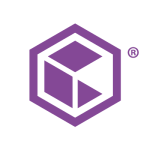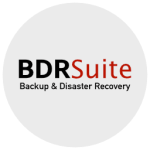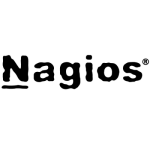What is our primary use case?
We are system integrators, also known as SIs.
We deploy on-premises as well as in the cloud.
Customers who use it in the cloud use it for email, file storage, and backup. When used on-premises, it is used for applications and databases.
What is most valuable?
Veeam Backup Replication is secure. They have covered almost every aspect, both in terms of security and backup, and management.
Integration with various applications, such as on-premises laptops and desktop backups, as well as applications and databases, is excellent. Also, they've added cloud integration, which is a plus.
The combination with Nutanix is admirable. It is very good.
It is easy to use.
It is simple to learn while performing POCs or demonstrations.
What needs improvement?
The automation could be better.
Automation is also available, but one customer recently requested a few types of automation that were not yet available, but they are working on it.
It is not 100 percent successful. POCs are being developed by a travel agency in Mumbai, and they are currently being improved.
In terms of automation, I believe they are adequate but not flawless. You can rate it a 3, or 4.
The infrastructure required for installation is still quite expensive. Even the deduplication part, which they promise up to 50%, you get 60, 70, or even 80% somewhere, but they promise 50%. If you specifically compare them to the data domain or some application appliances, you can say deduplication is not that mature. But, in a normal scenario, it is fine.
The support could be improved.
For how long have I used the solution?
I have been working with Veeam Backup & Replication for more than five years.
What do I think about the stability of the solution?
Veeam Backup Replication is a stable solution.
What do I think about the scalability of the solution?
The scalability is good. We have a customer who started with 10 licenses and has since grown to more than 30, or 50 licenses. They are also looking into another three or four branches.
We have more than 10 customers.
How are customer service and support?
Technical support is good, but I wouldn't rate it more than seven out of ten.
Support could be better, but it depends on what the issue is. We have some issues with the database and backup time or the backup window more specifically, sometimes there are backup failures.
Support could be improved, but that depends on the issue. We are having some issues with the database and backup time, or more specifically, the backup window; occasionally, we experience backup failure.
If you do the root analysis, you will find that these are the issues, and they will suggest ways to resolve the issue from the knowledge base.
Someone who has worked in that environment or understands backup replication technology can help, as can an L2 engineer. However, it will be more difficult for L1. He must escalate to support, and support will take three, four, or five days, depending on the severity of the issue and the nature of the call.
If it is not a critical environment, and if only that option is enabled, I think this is a good solution. However, this is a very critical environment, and if you do not enable other things, such as instant recovery or something similar, and you don't have the expertise, it can be painful for the customer.
Which solution did I use previously and why did I switch?
We are working with Nutanix and Dell products for disaster recovery.
How was the initial setup?
The installation is simple and straightforward. Anyone who understands backup storage or product installation can understand this.
They have a sizing calculator and everything, once you enter that data and the retention period and everything, everything comes up with you.
The time it takes for installation and deployment is dependent on the recovery process. However, they have instant recovery, which will also take less than a minute.
It's just adding up that specific storage. The research option for indexing is also good. If you know what you want to search you can search the catalog, and then copy/paste or download that image. If you want a proper file-level recovery, it will take some time. Specifically for virtual machines you want to completely revoke that machine, it only takes a minute or two, if that.
Recovery is such an important part of any backup and recovery solution.
Because replication solutions include in-built licensing, you do not need to purchase a replication license separately, which is beneficial for Veeam.
We have completed approximately five large projects for enterprises with 1000 or more customers, 1000 or more end-users, or applications and databases. As a result, we needed seven to eight days to deploy and maintain everything with just one person.
What's my experience with pricing, setup cost, and licensing?
What they have in place for the licensing, is really good, which makes it easy to convince customers.
It is a subscription license, and that is where every software solution is heading. The software subscription model can be once a year, or every three years, or every five years.
What other advice do I have?
Nutanix is capable of disaster recovery. Mine is a backup, but Veeam has the same capability, as does Mine, and is a hybrid of Veeam and Nutanix. Veeam is a different backup and replication software that we also used.
Definitely, I would recommend this solution. I have been working with Veeam for over five years. And I sold it to four or five customers in North India by myself. So, yes, we highly recommend Veeam.
I would rate Veeam Backup & Replication an eight out of ten.
Which deployment model are you using for this solution?
On-premises
Disclosure: My company has a business relationship with this vendor other than being a customer. Integrator





















